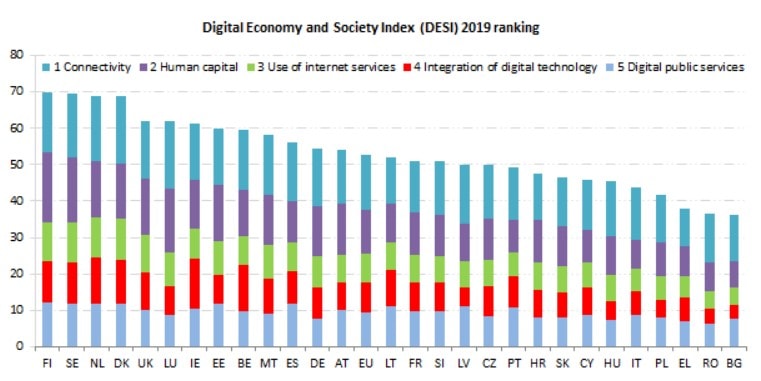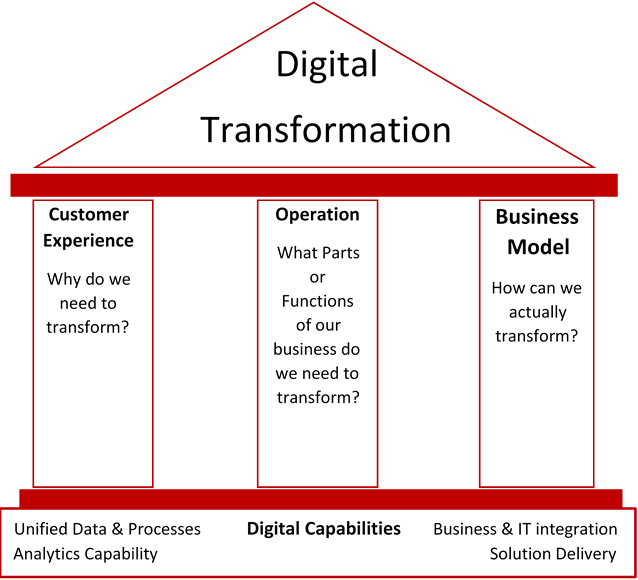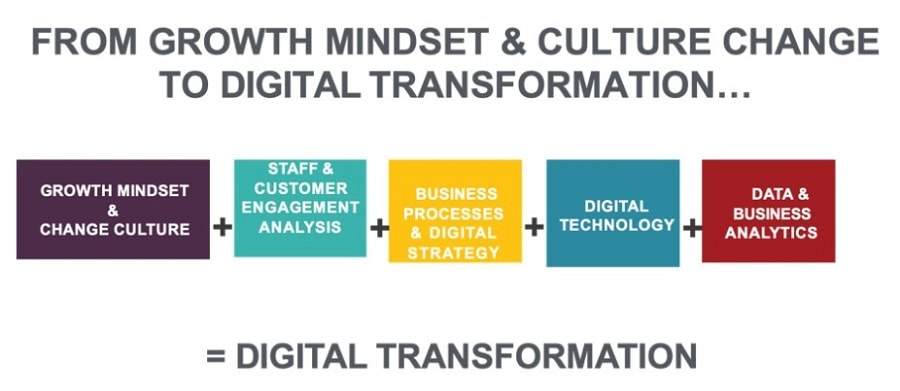Author
Zoi Patergiannaki The views and opinions expressed here are those of the authors and do not necessarily reflect the official policy or position of Linakis Digital.

Source: NASA on Unsplash
The world may have stopped, and everything has come to a haul due to the outbreak of the Coronavirus. Nevertheless, governments, Health & research institutions, big industry players and smart SMEs have seen the opportunity in moving towards the 4th Industrial Revolution.
Indeed, COVID-19 has created chaos, controversies between public figures and scientists and extreme needs that everyone struggles to deal with. It is just like a war. In every war, everyone employs creativity and innovation in order to find a possible solution to fight the enemy. The main weapon of our society is technology! Many technological solutions have been employed by governments and businesses to overcome the problems that they are facing.
The world runs digitally.
The educational activities, health services, exercise and retail services have become digital. Mobile Apps, e-commerce, and web-conference platforms are the first technological assets that everyone employs, develops and uses. But the means we have in our possession are limitless! Cloud computing, the Internet of Things, big data, and artificial intelligence are only some of the technologies that are used to optimize our work.

Source: Chris Ried on Unsplash
In the UK, the Supreme Court operates completely online, and doctors examine their patients remotely. New relationships between public and private sector fare formed [1]. In most parts of the world, the workplaces and the education have been digitally transformed. Even in Greece, a country with one of the lowest Digital technology adoption rates in the EU [2], the governmental bodies, the educational institutions and companies no matter how large or small they are, have adopted many digital solutions.

Source: DESI 2019, European Commission
The reality confirms what the Digital Transformation researchers and the technology experts struggle to prove for years now, that a sustainable economy can exist digitally!
The Challenging Transformation
Businesses have been forced to review their current business models and adopt innovative digital ways of conducting their business. From Fast Track Innovation, we are moving towards Fast Track Digital Transformation. We may not be prepared for such a drastic change, but innovation is a disruptive process whenever it happens. This is why during times of major digital transformation, companies need to change their core pillars of Customer Experience, Operation, and Business Models while trying to evaluate the existing capabilities inside [3].
Going deeper into these three pillars and the capabilities that companies have to build [4]:

Source: Pollalis Y. (2019), Reynovich S.R. (2019), MIT Sloan (2019)
- For the Transformation of the Customer Experience, companies need to develop their understanding of their customers. For this purpose, many tools have been invented and many methodologies have been developed. This knowledge is used for providing the customers with the services and products they need and understanding when they need them. The last of DT is the digitalization of customer touchpoints. Companies need to be where their consumers are so they can be easily accessible, while their web presence should be easy, useful and in line with their users’ norms. Indeed, coronavirus seems to enable many SMEs, family and micro businesses to acquire a digital presence.
- The transformation of the Operation is about efficiency. The processes should be digitalized, and human resources should develop more strategic tasks and decisions about increasing the efficiency of their work. People should be able to work remotely and collaborate with their colleagues without having to take into consideration the distance barrier. Currently, COVID-19’s impact on Digital transformation has been that the companies and the employees have found the way to overcome the distance barrier by being creative and finding new ways to digitally communicate and work. Finally, companies should optimize their data Warehouse for the c level executives to be able to effectively manage their company and the different departments even through distant working and make their decisions based on real data.
- Finally, the Business Model integrates the pillars mentioned above with the way of conducting business and generating profits. The first step of Digitally modified businesses has already been made. For several years now, companies use technology in order to enhance the value of their products, while many others have been born globally which in turn means born digitally. These companies have never really transformed because their core foundation is digital so the distance or the consumer understanding was never a problem. The real pitfall of the COVID-19 comes for the traditional businesses that now need to develop new digital product and services in order to continue doing business.
As mentioned before for the implementation of the digital transformation on these three pillars, the digital capabilities of the firm are critical [4].
1. The business should be able to unify the data so they will understand their clients and the value of their product. Along with the data, they should be able to unify their processes to find a way to optimize their operation.
2. The second necessary capability is that of understanding the data. Data is the way for developing a successful strategy and creating a competitive advantage.
3. The information collected should be used strategically, so IT should be integrated with the business goals. The CEO should become best friend with the CIO to develop the strategy together!
4. The strategy should deliver a solution that will assist in cost reduction and will add increased value to the product.
The professor at Digital transformation of the University of Piraeus, Yannis Pollalis explaining the basics of Digital Transformation has made a visual brief of all the required components of Digital transformation [5].

Source: Pollalis Y. (2019)
Changing role of IT sector.
Unfortunately, COVID-19 is vicious threat that spreads fast, forcing the change many governmental bodies, institutions and traditional companies were not prepared for. Thus, they are found lacking digital capabilities and the know-how to transform their business. These institutions need external help, which is provided by companies operating in the IT sector. However, the traditional role of IT companies is the provision of digital solutions in specific problems.
Now, IT companies have to act in the role of the consultant. Apart from designing and developing a website, and helping out in the digital marketing campaign, they guide their clients to the best solutions fit for them, and they provide the capabilities missing from the clients. Services like Customer Insights and Analytics and Digital Business Optimization are now leading the way towards a sustainable business operation. So, an IT guy, a UX researcher, and an Analytics expert become the core team for sustaining the business operation, and their weapon is a powerful CMS system.
Organizations need to be agile to maintain their position and they need to quickly adopt any tech solution that will keep them running. However, solutions implemented as a “one fit for all”, or as emergency solutions are only temporary, while the digital transformation of the society is permanent. Companies and public institutions need to develop strong partnerships with IT companies that together will co-create solutions for the current operation, and they will form new products and services fit for the newly created digitalized world.
Coronavirus has brought digitalization closer, however, the road towards a digital transformation is long and no organization can get there alone. Therefore, it remains to be seen if we have learned anything from this crisis and if we will get out of it stronger having all the assets required for our future.
References
[1] The Economist, "How covid-19 is driving public-sector innovation," 4 4 2020. [Online]. Available: https://www.economist.com/britain/2020/04/03/how-covid-19-is-driving-public-sector-innovation.
[2] EC, "DIgital Economy and Societu Index Report 2019. Integration of Digital Technology," European Commision, Brussels, 2019.
[3] R. S. Reynovich, "MIT Sloan's Roadmap to Digital Transformation," MIT, 2018.
[4] MIT Center for Digital Business and Capgemini Consulting, "Digital Transformation: A Roadmap for Billion-Dollar Organizations," 2011.
[5] Y. Pollalis, "From Growth Mindset to Digital Transformation Strategy: It's about Building Bridges & Great Journeys, NOT just Technology," LinkedIn, 19 04 2019. [Online]. Available: https://www.linkedin.com/pulse/building-bridges-from-growth-mindset-culture-digital-pollalis/.
Author
Zoi Paterginnaki, a PhD can. in Digital Transformation and Strategic Leadership at the University of Piraeus. Holding a MSc in Management from the University of Nottingham, UK and a Bachelor degree in Social Administration and Political Science from the Democritus University of Thrace. Currently, she works as Digital Marketing Executive at Linakis Digital.
Disclaimer
The views and opinions expressed here are those of the authors and do not necessarily reflect the official policy or position of Linakis Digital. Any content provided by the authors are of their opinion and are not intended to malign any religion, ethnic group, club, organization, company, individual or anyone or anything. The authors' opinions are based upon information they consider reliable, but Linakis Digital does not warrant its completeness or accuracy and it should not be relied upon as such.


